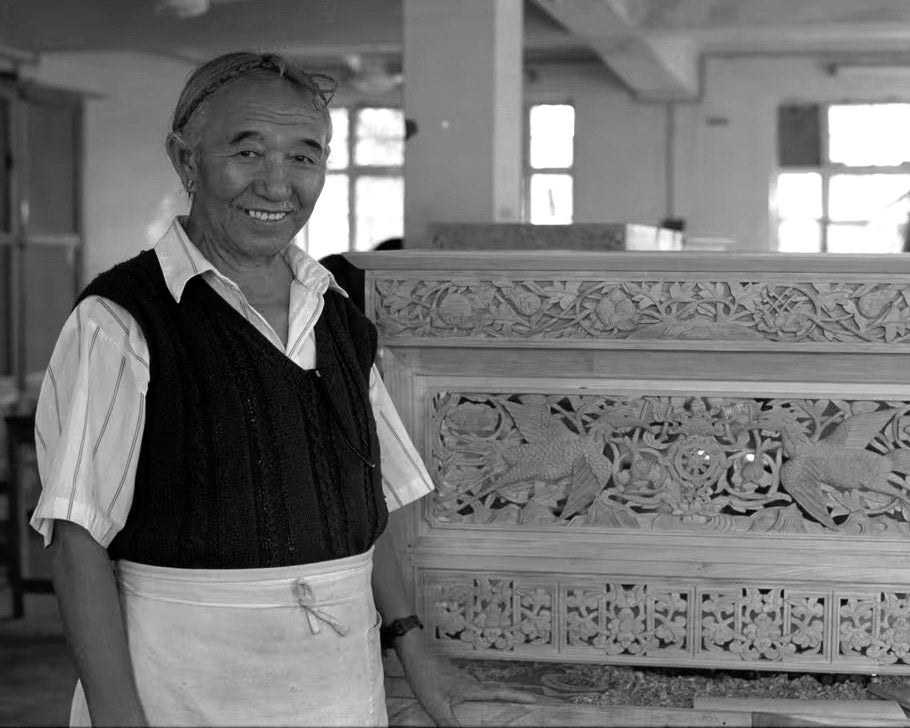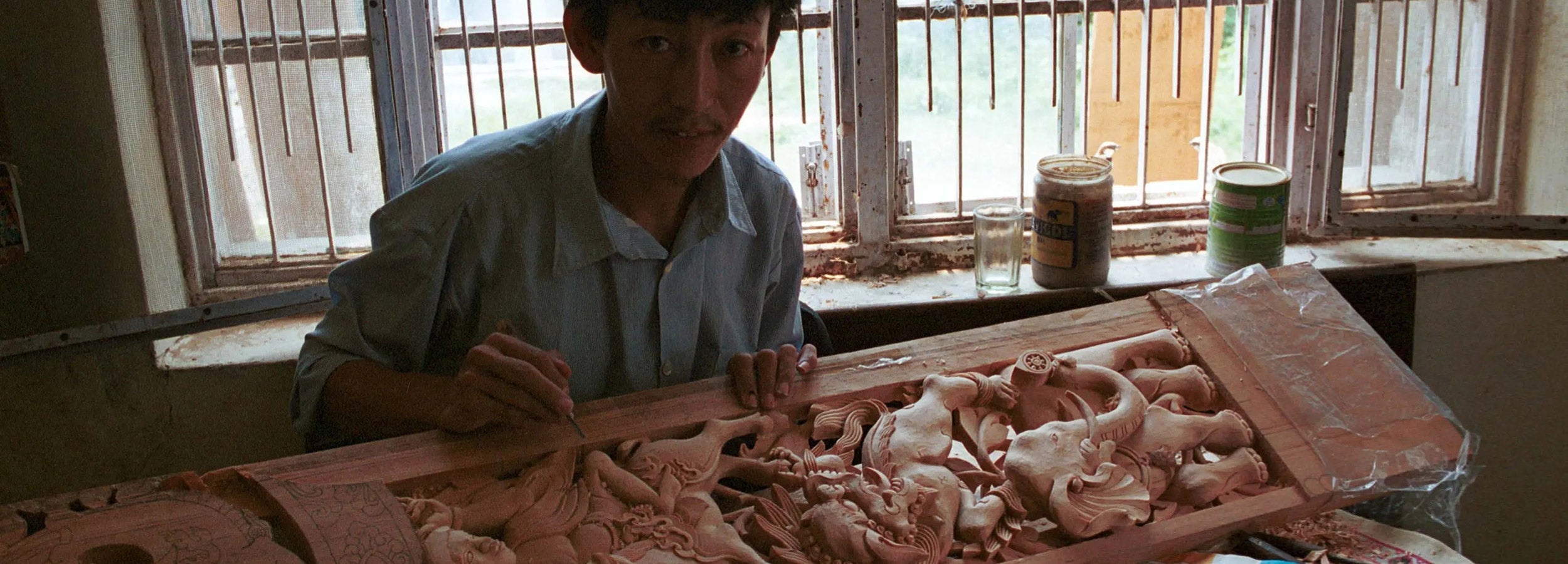Wood Carving
The Tibetan tradition of woodcarving dates back to the seventh century, commonly appearing in the crossbeams of houses, door and window frames, as well as in furniture. Like other Tibetan arts, the motifs used are often iconic, following a standard representation. Various types of flowers, mountains, clouds, and other elements in nature, as well as religious symbols, all have a style in which they must be drawn, and so becoming an expert carver means mastering a vast repertoire of motifs and designs.
Although woodcarving is not a religious art, because Tibetan culture is so linked with Buddhism, many of the popular motifs do have a religious significance. Among the most common symbols to be carved are the Tashi Targye, or Eight Auspicious Symbols. These are also the first designs that any beginning student learns to make.


In old Tibet, woodcarvers were not just artisans, but also served as carpenters, architects, and engineers. Their role was crucial in constructing the posts and beams of a building, a task that required careful analysis of each piece of wood to determine its load-bearing capacity. The beams were fitted together, and still are in many areas, without the use of hardware, showcasing the mastery of woodcarvers in fashioning complex joints that could bear the weight of a structure. Even furniture was created without any hardware but as carved panels that were ingeniously assembled to form the whole piece. Our wooden furniture at Norbulingka is a testament to these same techniques, with expertly and precisely fitting joints constructed without any hinges or nails, a true masterpiece of woodworking.
When carving, first, an image of the design is transferred onto the flat surface of the wood. Then, a Tibetan bamboo fret saw cuts out holes in the image. Finally, chisels are used to carve the design from both the front and back, creating depth. The initial training for woodcarving students is three years. For the first few months, students do not practice on wood but only focus on learning to draw traditional designs. Then they are taught how to make their own chisels, which will remain with them for a lifetime, and how to use them. Students first begin carving pinewood because it is much softer and forgiving, and they eventually move on to teakwood. Apprentices must also master fundamental carpentry techniques for cutting and joining pieces of wood. After their apprenticeship is completed, most carving students will have mastered the basic designs and techniques and will be ready to create more elaborate pieces, though the carved thrones and cabinets that adorn the shrine rooms and altars of great homes and monasteries will take many more years of practice.

WORKSHOPS


For those who wish to learn the art of woodcarving, Norbulingka offers workshops ranging from one day to several months. Courses are designed based on the time and interest of individuals and groups. They are a great way to learn more about the sophistication of Tibetan culture and students will leave with a beautiful piece of their own.
Our Masters

Choe Phuntsok, Late Master

Tashi Phuntsok, Woodcarving Master






